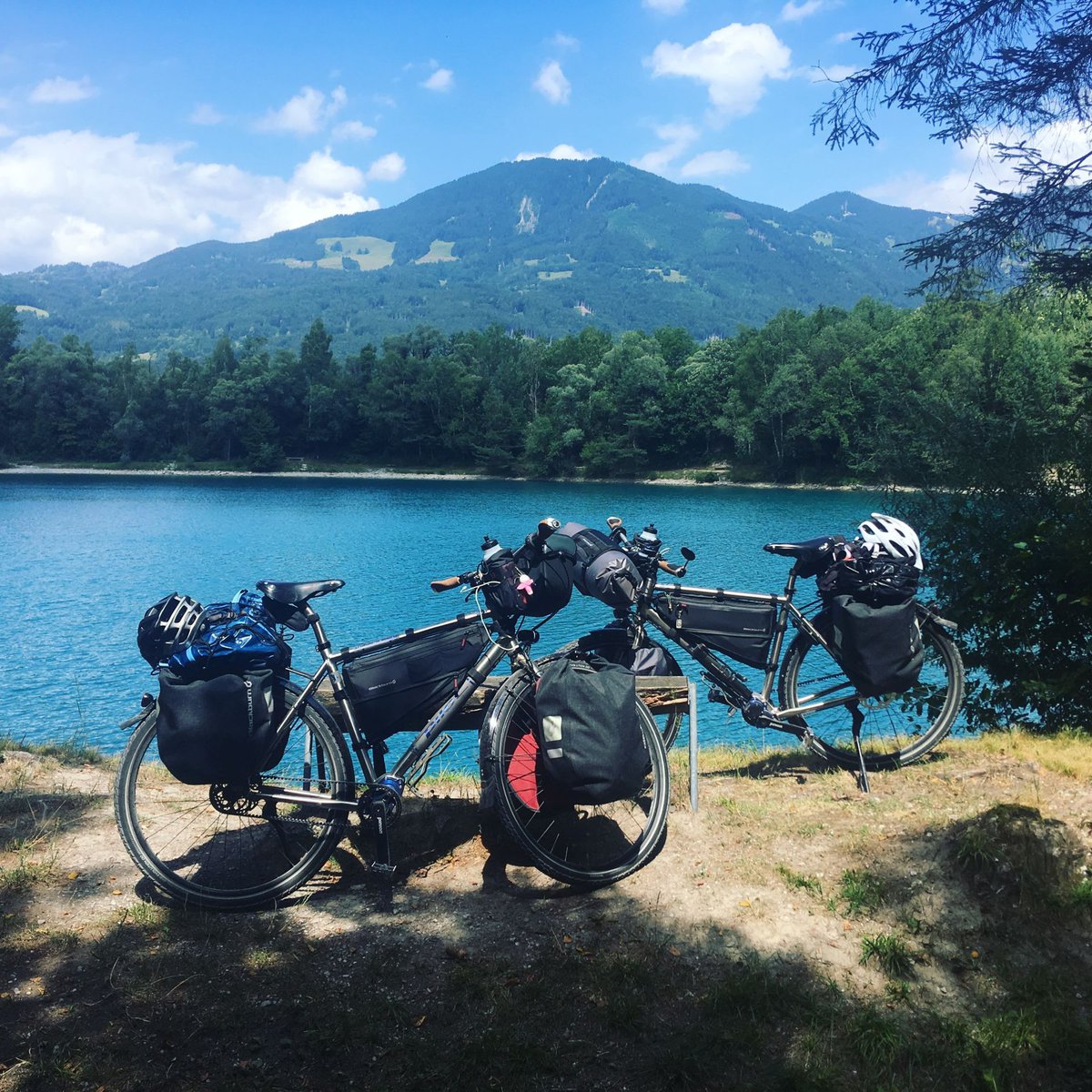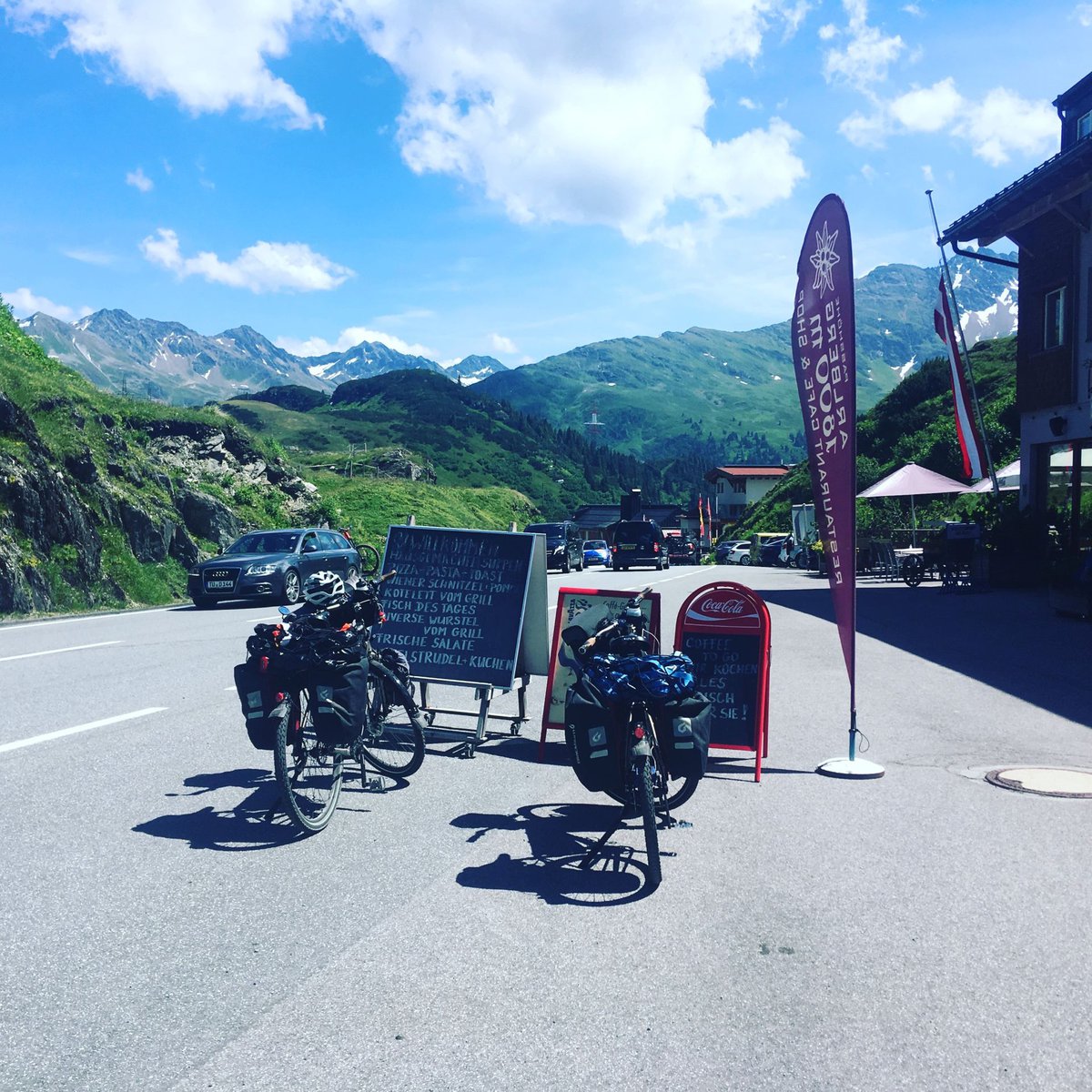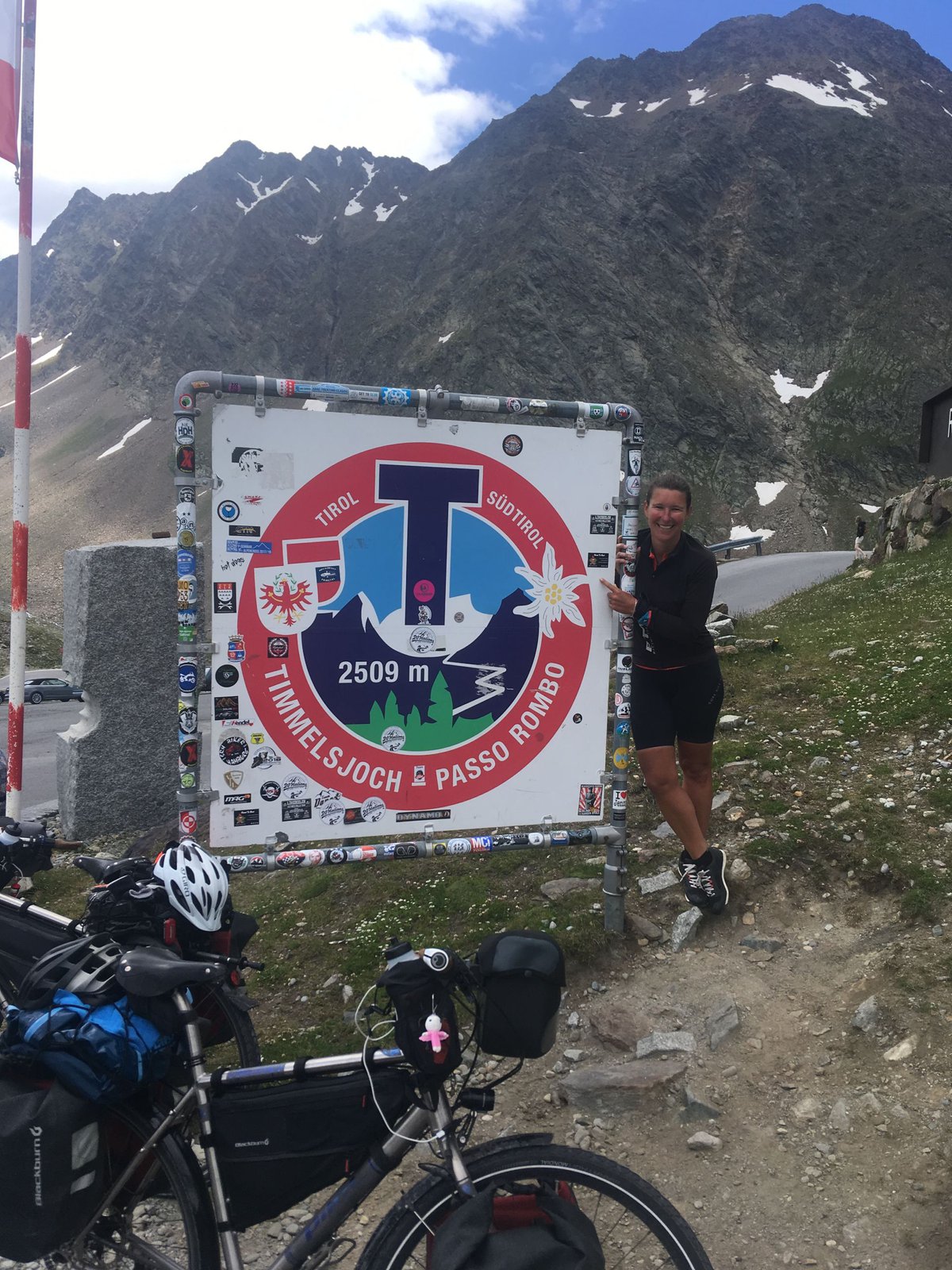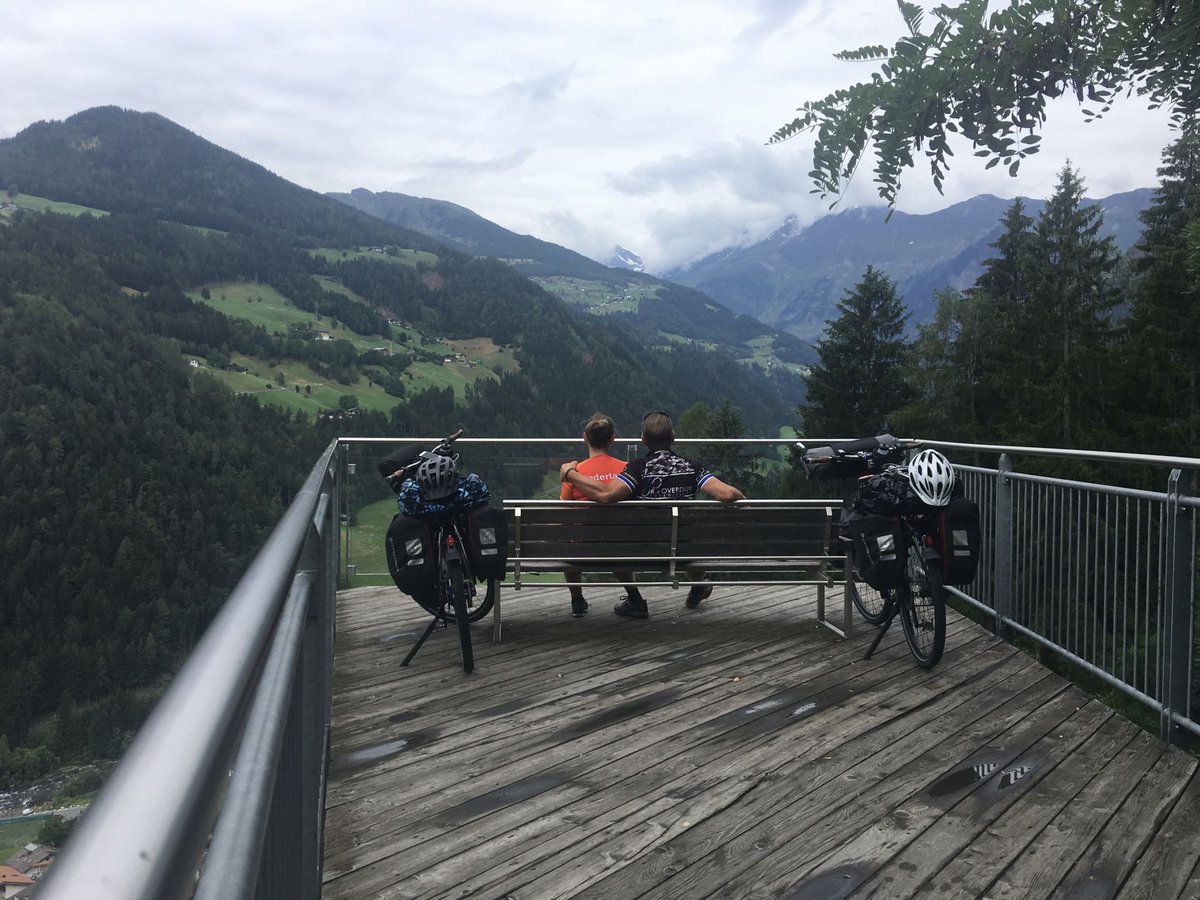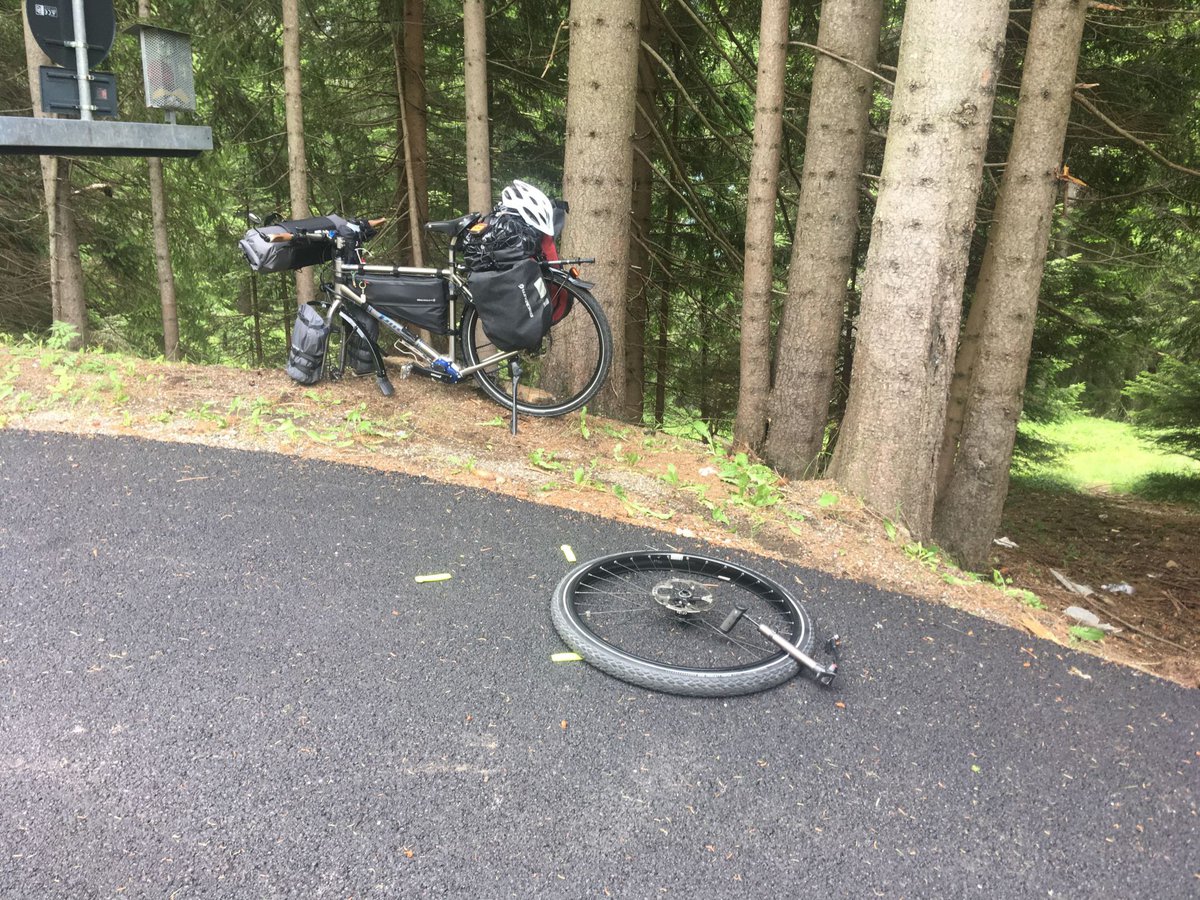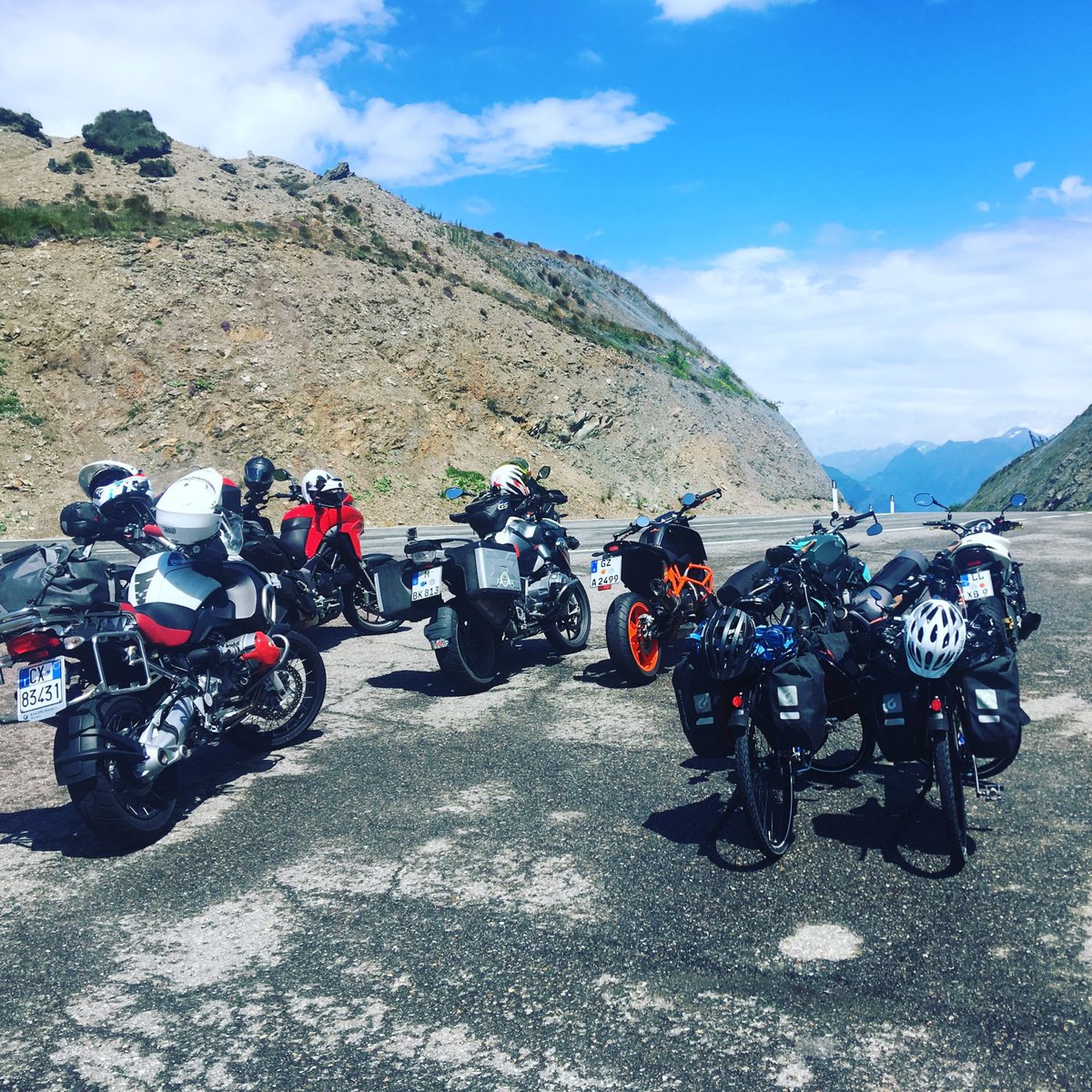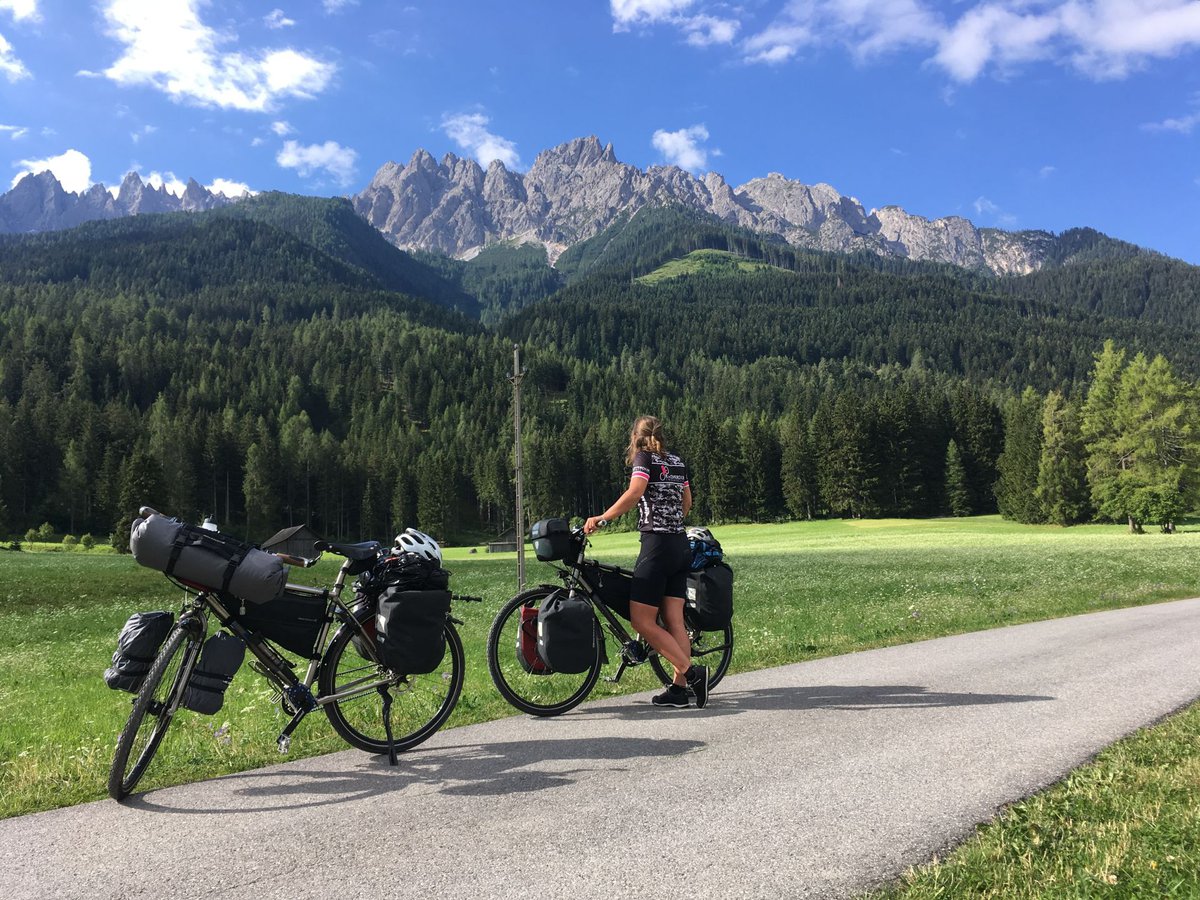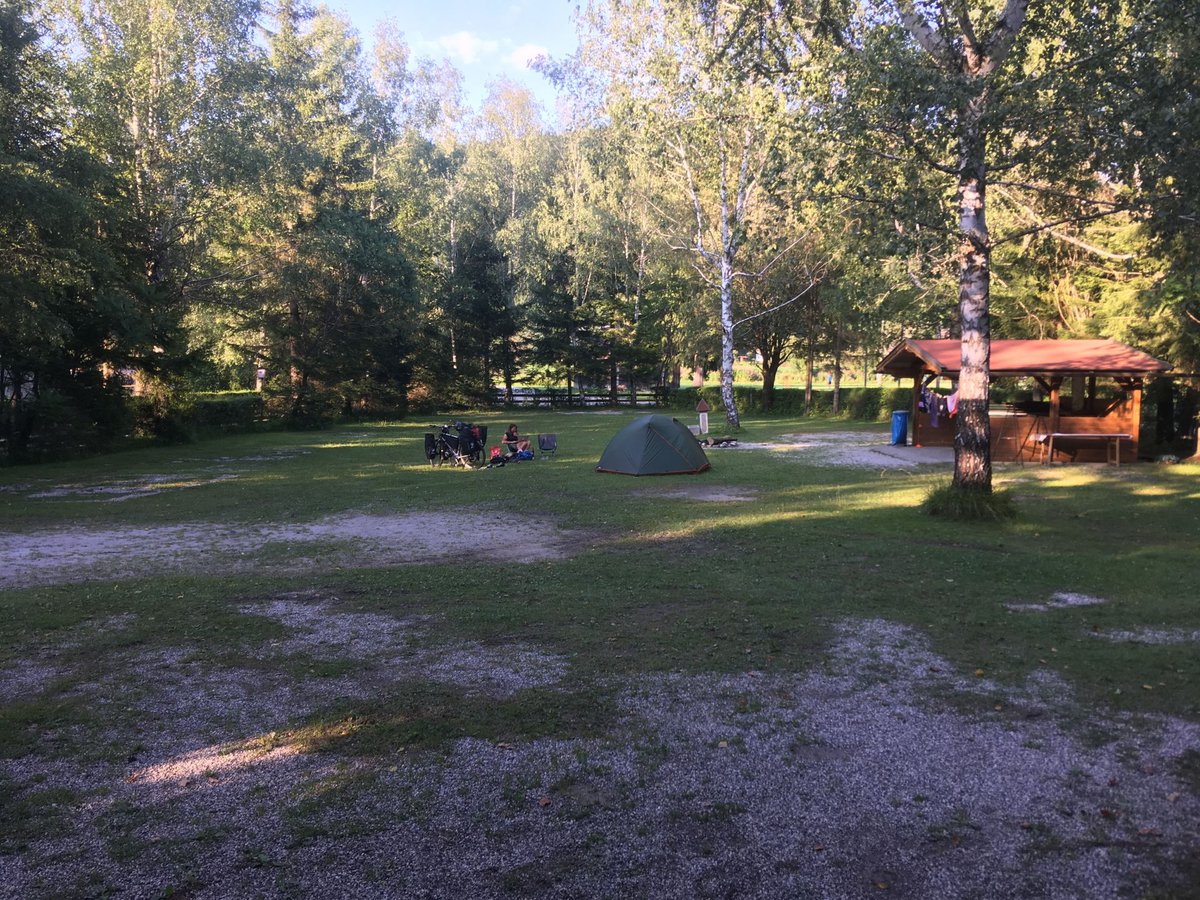Published at July 19, 2018 at 7:19 AM
The Alps are beautiful, not many will dispute that. But if you have to get on the other side, people still find them a barrier. Motorists will have to deal with tunnels, toll-laden and congested roads, an overheated engine, traffic jams, children yelling in the backseat and fatigue after a day of driving from the Netherlands or other Northern European countries. Cyclists (without e-motor and with luggage) often choose the lowest passes and / or stage with a not too high percentage of incline. Favorite for cyclist is the Reschen Pass, which is about 1500 m high and has a moderate rate of increase. The Brenner Pass is also widely used.
You also have cyclists who enjoy the climbing and the beautiful views that that entails, actually want to enjoy it a little longer, and also see a sporting challenge in the Alps. “Unfortunately” we belong to this last group, haha. So we deviate from our planned route (which would take us over the Brenner Pass) and we choose to cross the Alps via the Arlberg Pass (1800 m), the Timmelsjoch (2509 m and thus the highest pass in Austria), the Jaufen Pass (2094 m) and then east through the Dolomites from Süd Tirol to Carinthia. We climbed the Timmelsjoch in 2016, also with luggage, but then we did not camp yet and had over 10 kg less to carry. We are curious how the extra weight affects us this time.
After a nice “entrance” from Lake Constance (Bodensee) via the Rheintal, Illtal and the lower course of the river Alfenz (Klostertal) we pitch our tent in Nüziders. Nothing climbed yet and yet we are surrounded by powerful and beautiful mountains. The campsite is rightly called something with Panorama. There is pretty good wifi and we update our blog. We are behind (especially with the English version and have made another adjustment in the format). This makes us go to bed late and leave the next day at 10 o’clock.
The day after the serious work begins. So it is already quite late in the morning when we leave. The Arlberg Pass is not entirely known to us. We suspect that the highest point at 35 km from Nüziders is in the village of Stuben at an altitude of 1407 m and from there descend via Sankt Anton to Landeck. In total 75 km.
At Stuben, a climb starts unexpectedly. Behind the village we see hairpin bends almost above each other and halfway there is a camper with a smoking engine. We start and feel tough in this setting. Bottled cooling water for cars is ready at every parking bay. At the top we put on our vests and helms for the descent. After half a kilometer we can not conclude otherwise than that the descent is still waiting and climbing further. The jackets go out again and at Harry the helmet goes on the steering wheel. At a restaurant we fall like this, a bit of our bike from our bike. We are on the Arlberg Pass and it turns out to be 1802 m high instead of 1407. Great preparation, haha.
After the Arlberg Pass a wonderful descent follows and in no time we drive into the city camping in Landeck. There is a special field for tents and Theresa from Switzerland has her tent there. From Landeck we cycle to Sölden. The route is sometimes challenging (with for example a short calf biting of 18%) while we cycle along the river Inn. If we hit the Ötztal a teenager department of the Lotto Jumbo cycling team will be thrown down. We slowly cruise up and start the 40 km climb to ski resort Sölden where we pitch our tent. In the evening, Harry suffers from toothache and is awake at night. The result of a night of thinking is that on Saturday no emergency dentist can be found. He wants to continue cycling if we can get our hands on paracetamol and ibuprofen.
The day starts at the pharmacy and from there the climb to Timmelsjoch starts. Halfway there is a nice Timmelsjoch sign and a South African lady with Dutch roots offers to take a photo of us at the plate. We chat and wish each other nice trips. It starts to rain slightly when we climb further. At the top the sun breaks through. In the end we can see how much heavier it is with about 15 kilos more luggage. Ralf from Best now (since 1.5 years) living in Otz gets us right in front of the top. You come from Oirschot, he asks. Yes, how do you know? Your shirt !! Forget that Harry is wearing Richard van Overdijk’s shirt this day. At the top we get into conversation.
We do not descend all the way to Meran or Bozen. Already in Sankt Leonhart we search for the campsite and do some shopping in the village. It is Saturday and we forget to go shopping for the next day. Sadly everything is closed on Sunday. Fortunately, the campsite appears to offer breakfast and we can cram to the next challenge.
Jaufenpass is sooo nice to cycle. You climb from Sankt Leonhard at 693 m altitude (again) to 2094 altitude over a distance of 20 km. The rate of increase is between 7 and 11%. The narrow road meanders through a beautiful forest until you reach the tree line. You can also enjoy beautiful views in the forest. You keep an eye on the valley of the Passeier, on which St. Leonhard lies. There is only one drawback: it is busy with cars and motorbikes. A large part of these 2 groups make the winding and winding climb a real race party. It often turns out to be gentlemen of advanced age: old men on Ducati’s, old men in Ferrari’s and one old man on a Pilot bike hahaha.
Harry gets a flat tire during the climb. A piece of glass has managed to penetrate the hardened tire. The tire shows an ugly tear. The inner tube does not seem to be possible to repair. But we take it with us anyway. The piece of glass is removed from the crack and nothing can be felt on the inside. New inner tube on and go! A kilometer later the tube is empty again! As it turns out, there is still splinter of glass in the outer tube and because of the weight of the bike a small hole has been punctured in the inner tube. The splinter is removed with tweezers with surgical precision. This time the inner tube is repaired and the inside of the tire taped to the spot of the tear.
On top of the Jauffen pass we park our bicycles between the motorbikes, take pictures and eat a bowl of goulashsuppe. What follows is another beautiful descent to Sterzing. We see a few men walking with well-filled shopping bags. Would there nevertheless be a store open in Italy on Sunday? Yes, the Romanian men remind us of a gigantic Spar. Half an hour later we are back outside with a mega weight of groceries. But that does not matter because the altitude profile of the remaining 25 km to Vahrn shows a gradual decline. Unfortunately, the profile is an average, the many steep climbs of about 300 meters well above 10% are not visible but nagger us. We arrive at the campsite around 7 o’clock in the morning. There’s not much time to enjoy the food we bought, because it quickly starts to rain heavily and it does not stop raining until after midnight.
First action in the morning is to get money in the village of Vahrn. There is no bankcard service at the campsite and the shabby camp Vahrner See is more expensive than what is think is fair. We combine getting money with a few groceries. Nice breakfast with fruit, cottage cheese and muesli. Everything is wet from the ongoing rain. It takes us a lot of time to dry the tent, towels and clothes in the sun that has returned.
Around 10 am we cycle a short distance back to the route at the fort Franzensveste. That is the fort where a large banner hangs with ‘Visit now’ just after (or from Italy) before the Brenner Pass. The fort was however not open to visit. A group of South German bicycle tourists on e-Bikes surrounds us at the entrance. From all sides we were fired questions. They have started their cycling trip a week ago at Lake Constance. Although they cycle on e-bikes, they done the mountain passes by train. Nice to see their wonder and to receive respect when they hear what we have already cycled in the Alps.
From the fort we cycle the Puster Radweg. That turns out to be a beautiful cycle route that takes us through a quiet valley to the overwhelmingly beautiful view of the jagged peaks of the Dolomites. The height profiles show a moderately steeper profile. In reality it goes up and down more often and we do not have it that easy. We stop at a campsite close to Toblach. It appears to be full to our fear. The reception lady sees our bewilderment and offers us an emergency spot on a strip of grass that does fit a tractor tent. We make grateful use of it!
The great thing about the campsite is the beautiful view of the Dolomites and that in the morning you can get delicious fresh bread at the supermarket. It has rained slightly but the tent is dry quickly. We leave around 9 o’clock and stand still a quarter of an hour later to take a picture of the mountains. What is beautiful here!
Soon we arrive in Innichen and from there it turns out to be one big chaos on the bike path. Families with small children on bicycles, with children or dogs in trailers from left to right and stopping and accelerating. Apparently it is a tourist attraction to cycle from Innichen on the Drau Radweg. Cruising without climbing through a beautiful landscape that you can not look at for a moment because it is packed with completely inexperienced cyclists. After Lienz it is over and we can enjoy the otherwise beautiful and well-marked bike path R1. We are back in Austria.
In Sachsenburg we find the ideal combination of a campsite and a supermarket. It does mean that it will be a long cycling day. At the end of the day there is 118 km on the counter, of which the most part decreasing: the legs did not have a hard time, the seat did!
From Sachsenburg we cycle the next day via Spittel to Villach. The road is bad, boring and aphids spit us under. In Villach we buy a MiFi, a mobile hotspot for later on this trip. It is now very hot and we cycle quickly to the Faakersee. The idea of taking a refreshing dip in the clear deep blue water is in great contrast to mass tourism. At first we are pleased that camping Arneitz can offer a place for our tent. The urge of a place at the lake and the fresh dive is completely blurred after waiting for 20 minutes on a bench next to the mega party hall between screeching children until an electric car cruises past possible tent spots. We decide to cycle to the campsite in the forest. The peace there feels like a godsend gift. We set up our tent at the group location.
The route towards Slovenia allows us to cycle another kilometer or 50 along the Drau on a hot day. The river that started as a pearl-blue sparkling mountain stream is now a brown-green dammed slow moloch. We are happy when we leave the R1 Drau Radweg and again have some variety. The last night in Austria we spend in Gösselsdorf and finally take a refreshing dip in a brown camping lake. Slovenia and the Balkans are waiting for us tomorrow. Goodbye Alps!

